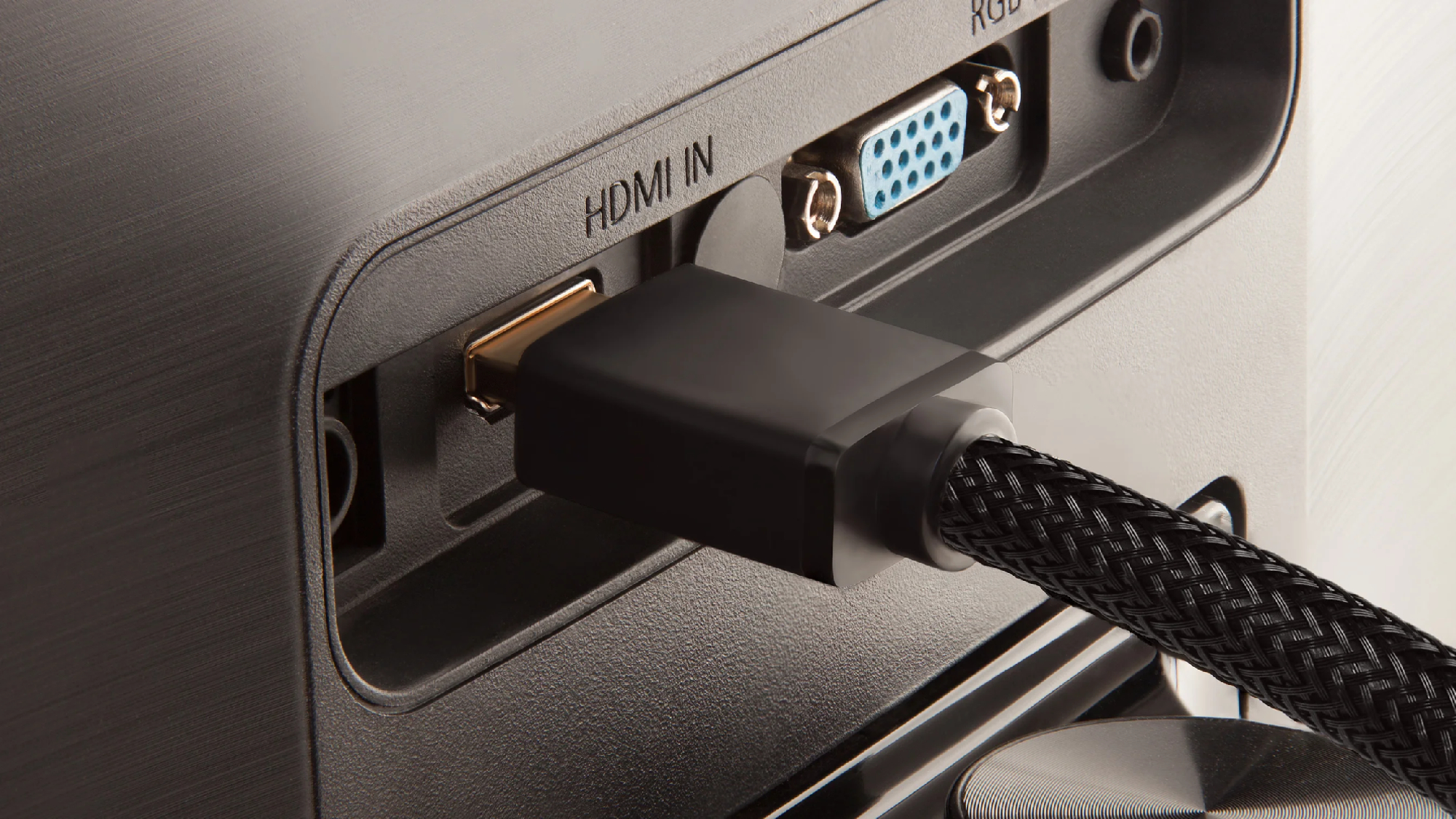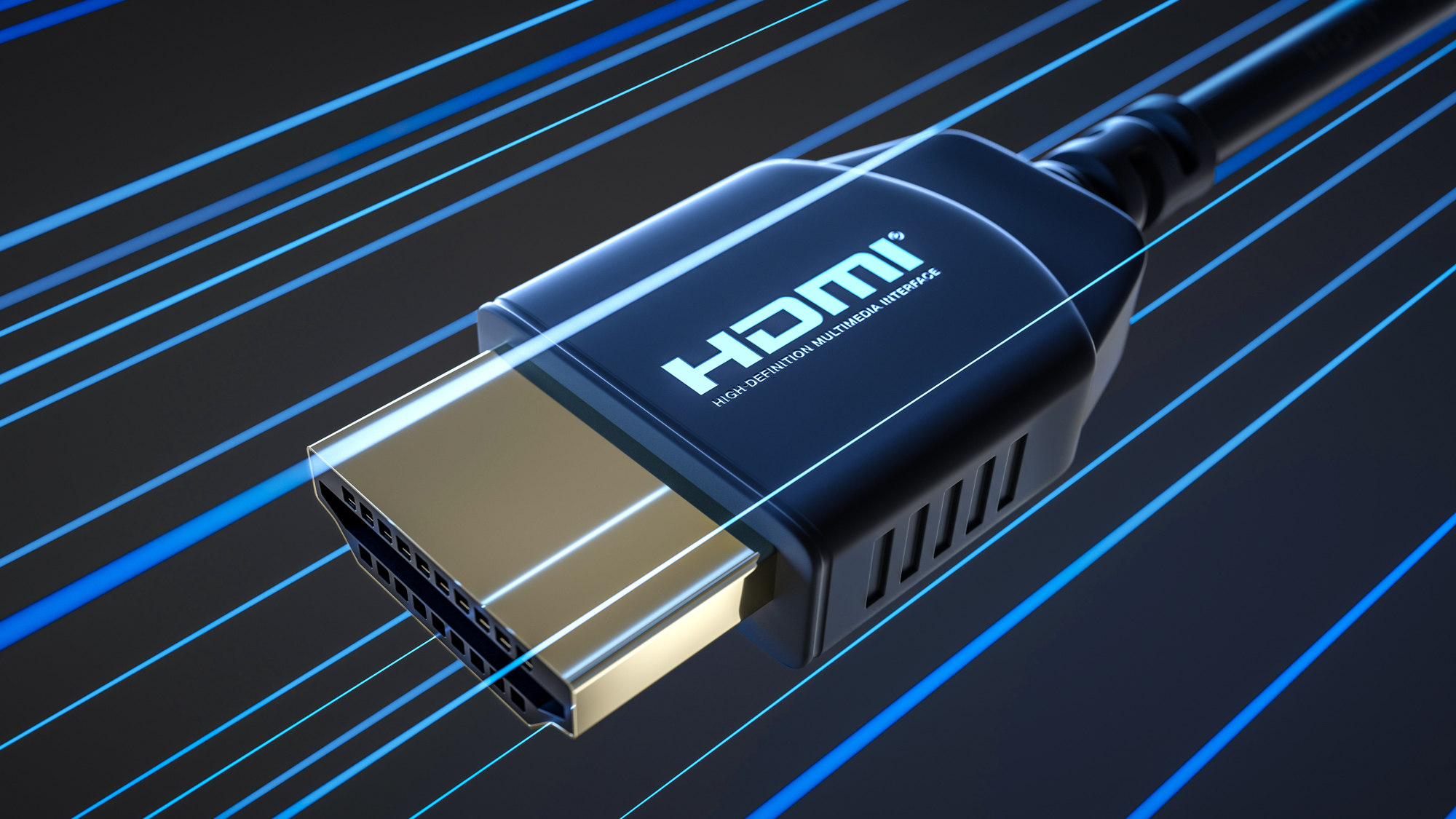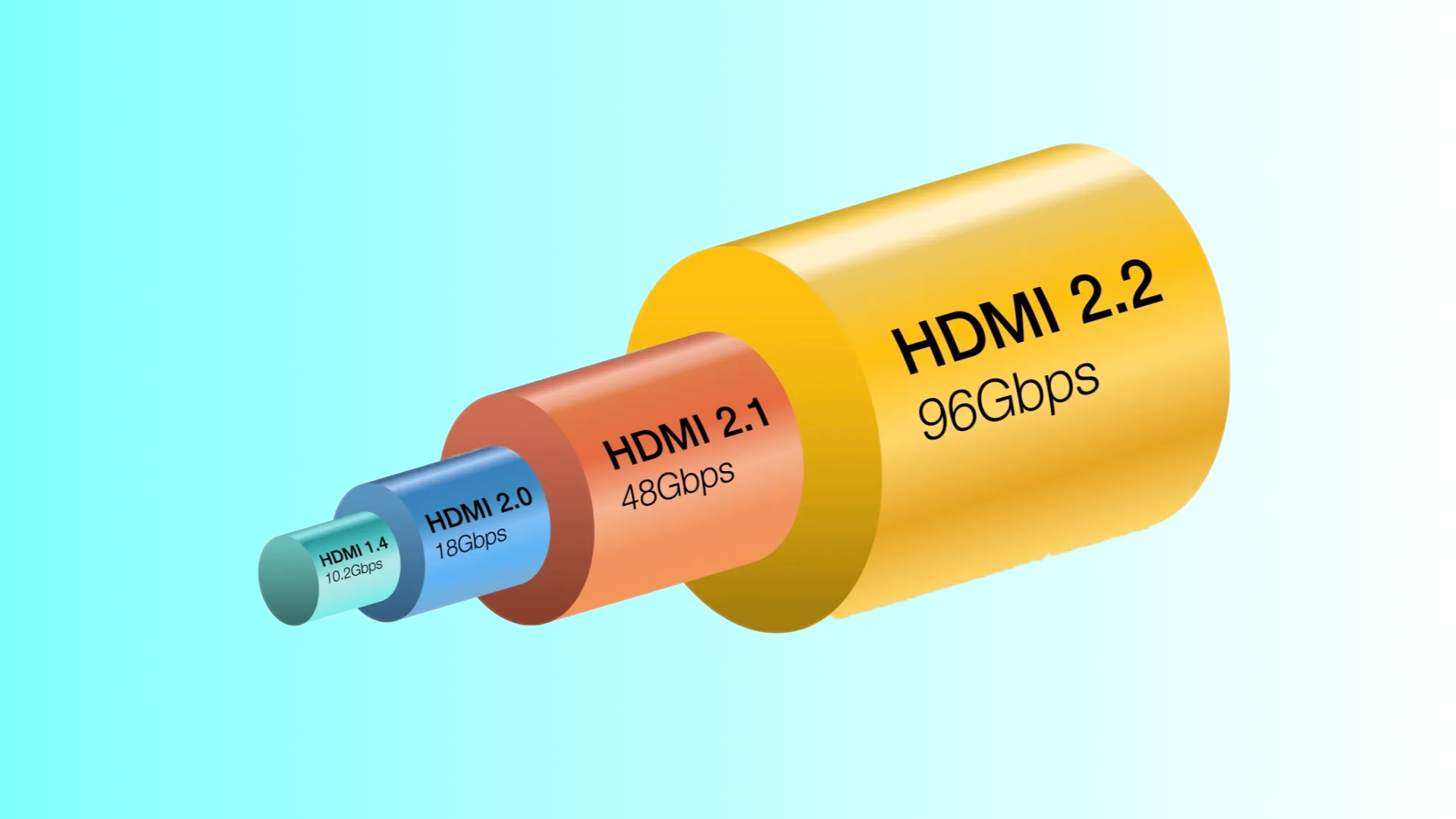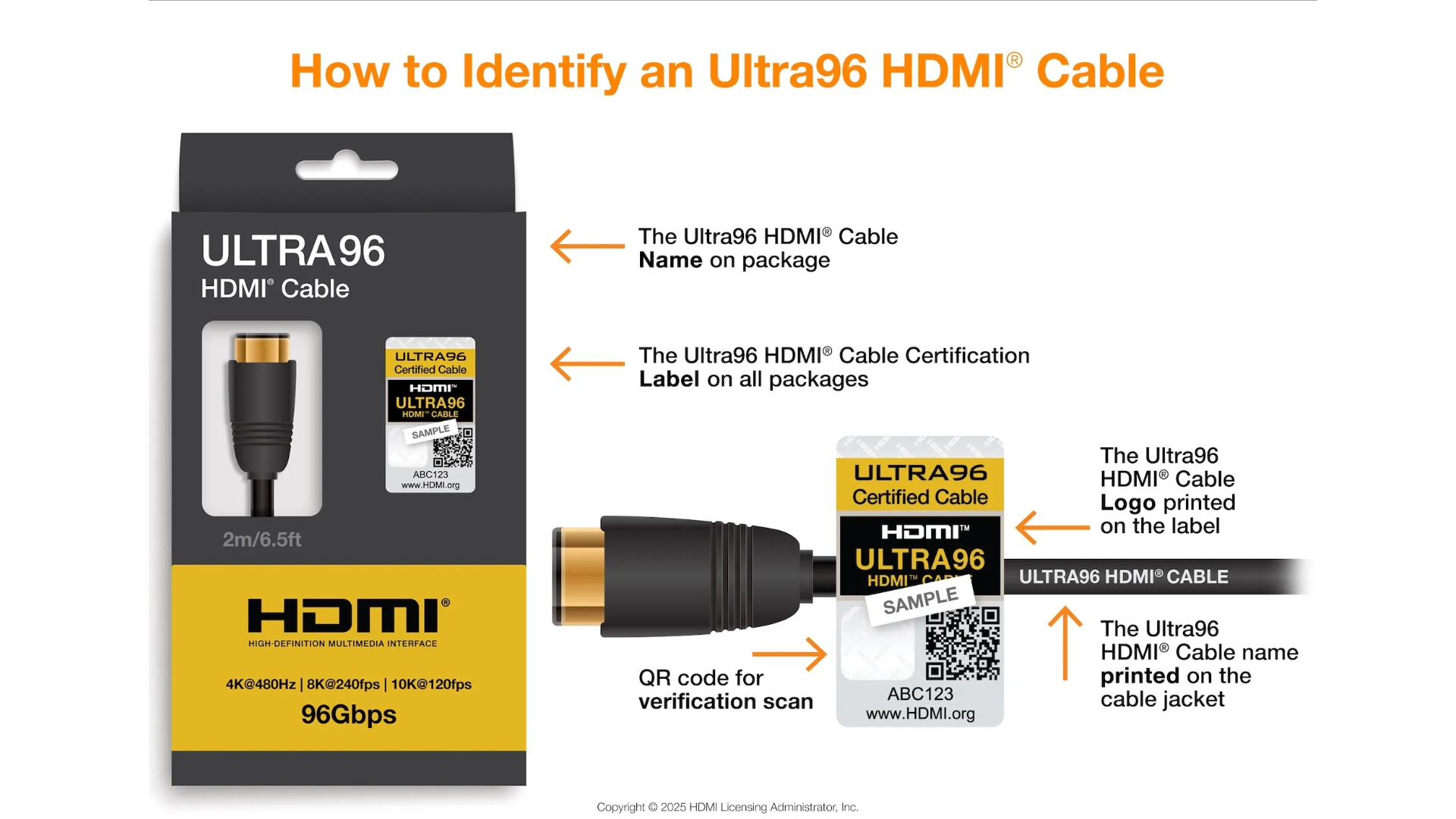
The advent of HDMI 2.2 is soon upon us. The new HDMI specification was announced at CES 2025, and it heralds some serious gains against its predecessor, HDMI 2.1, main among them faster speeds and broader 8K functionality.
HDMI 2.2 is expected to release sometime in early 2025, but there's little else we know about its release beyond that. Although any official details of its official debut on both hardware or in cable form are sparse, you might still be curious if upgrading is even worthwhile.
Be that as it may, here's everything you need to know about the new spec against its predecessor and what you'll need if you plan on upgrading.
HDMI 2.1 vs HDMI 2.2: the HDMI 2.1 spec explained

To understand the leaps and bounds of HDMI 2.2, we must first look at the current spec, which is technically HDMI 2.1b — a slight improvement over HDMI 2.1.
Launched in 2023, HDMI 2.1b didn't offer many new features but amplified existing ones, like eARC connectivity for some of the best soundbars and best AV receivers. Also included were enhanced gaming features, such as ALLM (Auto Low Latency Mode) and VRR (Variable Refresh Rate), Quick Media Switching, and much more.
One of its biggest improvements over the base HDMI 2.1 format was introducing support for higher video resolutions at faster refresh rates, particularly 4K/120Hz and 8K/60Hz support. There's also several key HDR upgrades baked in, like Source-Based Tone Mapping and Dynamic HDR.
HDMI 2.1b also introduced new certification processes for Ultra High Speed HDMI cables, ensuring they met the highest standards for displays and connected devices. At the heart of HDMI 2.1b was improved reliability, which was set across audio, gaming, and picture performance.
HDMI 2.1 vs HDMI 2.2: biggest upgrades for HDMI 2.2

Back in January, the HDMI Forum announced the changes coming in HDMI 2.2 in a press release. The key differential is offering double the bandwidth of HDMI 2.1 at 96Gbps. This allows the HDMI 2.2 spec to facilitate uncompressed data far more swiftly, offering greater bit depth at higher resolutions that leads to much more detailed images.
And if you thought HDMI 2.1b had serious potential with its higher resolutions, HDMI 2.2 leaves it in the dust — especially when it comes to refresh rate support. These include 4K at 480Hz, 8K at 240Hz, and even 10K at 120Hz, all of which will require the new Ultra96 cable for proper functionality.

There's also a slight improvement in audio syncing, called Latency Indication Protocol (LIP). This aims to reduce desynchronizations of sound between what's on the screen and your speakers. It's a slight improvement over what already exists in the eARC specification, but primarily focuses on spoken dialogue.
One of the most exciting perks of HDMI 2.2 is that it can deliver uncompressed 8K video output at 60Hz with 4:4:4 color sampling with an 8-bit color depth. That's perfect if you're running on of the best gaming PCs connected to a future version of the Samsung QN990F with HDMI 2.2 support, but otherwise it might not be as attractive to every end-user.
Thus begs the question, do you even need to upgrade?
HDMI 2.1 vs HDMI 2.2: Should you upgrade?
There's a lot to consider before diving headlong into the world of HDMI 2.2, but the most important consideration is going to be timing. At the time this story was written, HDMI 2.2 cables, the aforementioned Ultra96 spec, aren't even on the market yet and we won't see any HDMI 2.2-compliant TVs until late 2025 or early 2026.
The HDMI Forum did state that the new specification would be "released in H1 2025," yet we're already nearing the end of April and there's still no real indication of when the official cables will launch, much less when major devices will get the upgrade.
All of the major TV brands have already announced their 2025 lineups, and not a single one has stated any HDMI 2.2 support. It's likely we won't actually see the spec on TVs or even some of the best gaming monitors until 2026.
The good news is that HDMI 2.2 will have backwards compatibility. That means you can use an HDMI 2.2 cable with an HDMI 2.1 or even an HDMI 2.0 input and it will still function, it just won't have those increased speeds. It also works the other way, in that you can use older HDMI cables in a device with an HDMI 2.2 input, but again you won't have the benefits of 96Gbps.
HDMI 2.2 outlook
HDMI 2.2 is arriving at an interesting time. Some of the best TVs this year are launching with even higher refresh rates, like the LG G5 OLED and Samsung S95F OLED TVs. In terms of higher-resolution TVs, most manufacturers have stopped making 8K TVs, however Samsung's still in the business and has launched two 8K models this year. Though both are sadly lacking any HDMI 2.2 support.
A major reason to upgrade, in my honest opinion, would be for VR and MR enthusiasts. Spatial reality and data-intensive workloads are at the forefront of what HDMI 2.2 has to offer. Other industrial-scale display concepts, like medical imaging or machine vision, will also benefit from the technology but are outside the purview of our coverage.
For casual consumers it's hard to recommend jumping on the bandwagon this early, especially with no definitive timetable and pricing still up in the air. It doesn't hurt being prepared when the time comes, though, as having some Ultra96 cables to futureproof your home entertainment setup is one way to prepare yourself for the PS6 and the long-awaited rollout of widespread 8K content.







